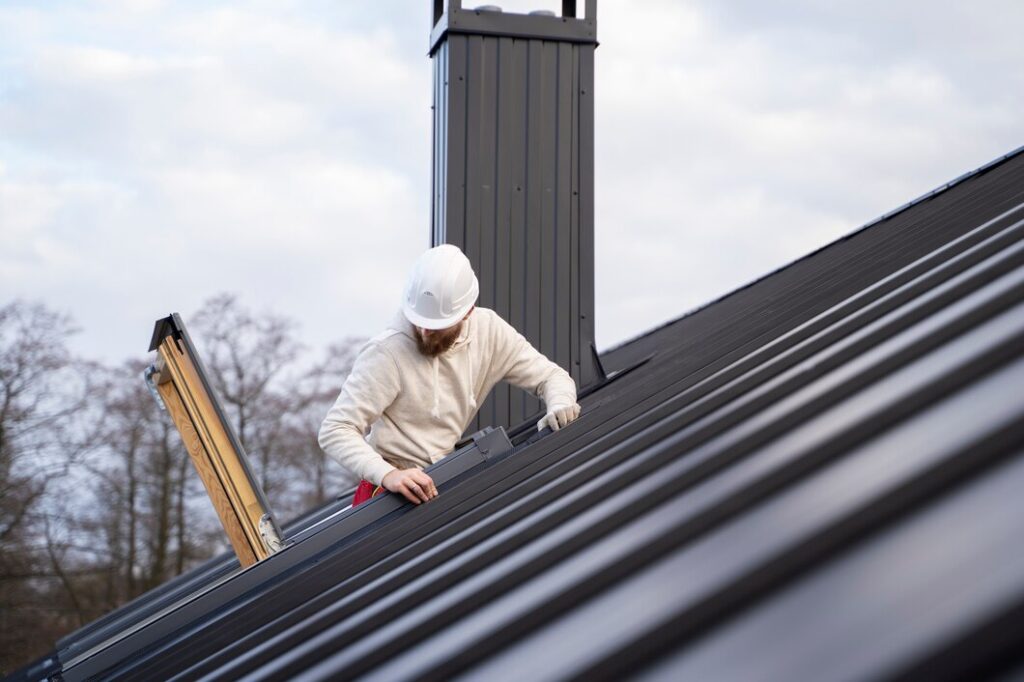Climate change and the increasing emphasis on environmental sustainability have driven homeowners to look for effective ways to minimize their energy usage and carbon footprint. One area in which homeowners can make a significant impact is by investing in energy-efficient roofing systems. By making thoughtful choices on the materials, designs, and ventilation for your home’s roof, you can significantly lower your energy consumption, save on utility costs, and create an environmentally friendly living space.
In this comprehensive guide, we will discuss various energy-efficient roofing solutions and techniques that will enable you to enhance your home’s sustainability while enjoying the financial benefits of reduced energy costs.
Energy-Efficient Roofing Solutions: Enhance Your Home’s Sustainability and Save on Utility Bills
Understanding Cool Roofs
A cool roof is designed to reflect more sunlight and absorb less heat than a traditional roof, helping to keep your home cooler and reduce energy consumption. These roofs utilize coatings or materials with high solar reflectance and thermal emittance properties. By choosing a cool roof, you can enjoy the following advantages:
1. Reduced energy bills: Cool roofs significantly decrease the heat transfer into your home’s interior, reducing the need for air conditioning and lowering energy costs.
2. Improved indoor comfort: Cooler roof temperatures mean more comfortable indoor temperatures, especially during summer’s intense heat.
3. Extended roof lifespan: Lower roof temperatures can prolong the life of your roofing materials by reducing the risk of thermal shock and minimizing wear and tear.
Choosing the Right Roofing Material
Several roofing materials offer energy-efficient properties that can help reduce your energy bills. Here are some popular energy-saving roofing materials:
1. Metal Roofing: Metal roofs are known for their high reflectivity, which can keep your home cooler and reduce energy costs. Some metal roofs come with pre-applied cool roof coatings or can be treated after installation for improved energy efficiency.
2. Tile Roofing: Tile roofs made from clay, concrete, or slate offer inherent thermal properties that can keep your home cooler in summer and warmer in winter. Light-colored tile roofs can also reflect sunlight and reduce heat absorption.
3. Asphalt Shingles: Energy-efficient asphalt shingles, also known as cool asphalt shingles, come with solar-reflective granules designed to bounce sunlight away from your roof and keep your home cooler.
Harnessing Solar Power
Integrating solar power into your energy-efficient roofing system offers an excellent way to generate clean, renewable energy while further reducing your utility costs. Consider these solar-powered roofing solutions:
1. Solar Panels: Installing solar panels on your roof enables you to convert sunlight into usable electricity for your home, diminishing your reliance on traditional energy sources and lowering energy expenses.
2. Solar Roof Tiles: Solar roofing tiles seamlessly integrate into your existing roof structure, providing an aesthetically pleasing and functional component of your energy-efficient roofing system.
Optimizing Roof Ventilation
Proper roof ventilation plays a crucial role in reducing energy consumption and maintaining a comfortable indoor climate. Here’s how you can improve the effectiveness of your existing ventilation system:
1. Ridge and Soffit Vents: Installing a combination of ridge and soffit vents allows a continuous flow of air across your attic, cooling the roof surface and preventing the buildup of excess heat.
2. Attic Fans: Powered attic fans can help regulate attic temperatures, expelling hot air and drawing in cooler outdoor air to prevent heat from seeping into your living space.
3. Gable Vents: Gable vents, placed at the highest point of your roof’s gables, release hot air trapped in your attic and allow for increased airflow, reducing the strain on your cooling system.
Additional Energy-Saving Techniques
To further enhance your roof’s energy efficiency, consider incorporating these supplementary methods:
1. Insulation: Invest in high-quality insulation materials to minimize heat transfer between the indoors and outdoors. Proper insulation can significantly reduce heating and cooling costs, creating a comfortable living space year-round.
2. Air Leakage Sealing: Seal air leaks around roof penetrations and openings, such as skylights, plumbing vents, and electrical protrusions, to prevent drafts and reduce energy loss.
Conclusion
Investing in energy-efficient roofing solutions and techniques not only contributes to a more sustainable and environmentally friendly lifestyle but also results in significant financial and comfort benefits for homeowners. By understanding the various options available, including cool roofs, energy-saving roofing materials, solar power integration, and optimized ventilation, you can take a proactive approach to reducing your energy consumption and utility costs.
If you’re considering upgrading your home’s roof to improve energy efficiency and lower your energy bills, our expert residential reroofing and repair specialists at Roof Rite AZ can help you make the best decision for your unique needs. Contact us today to schedule a free roofing inspection, and let our experienced team of roofing contractors in Mesa, AZ, guide you towards a greener future with an energy-efficient roofing system tailored just for you.


